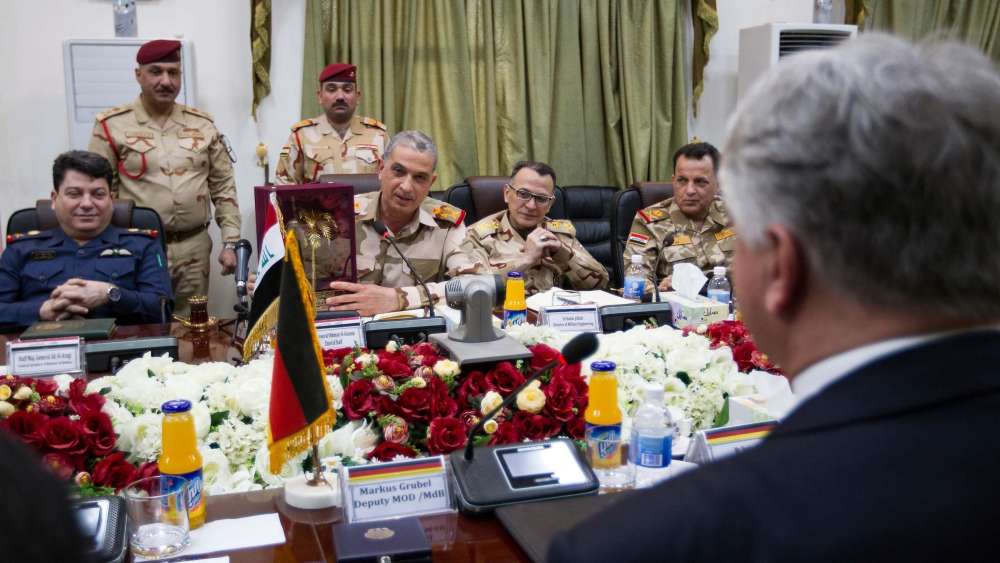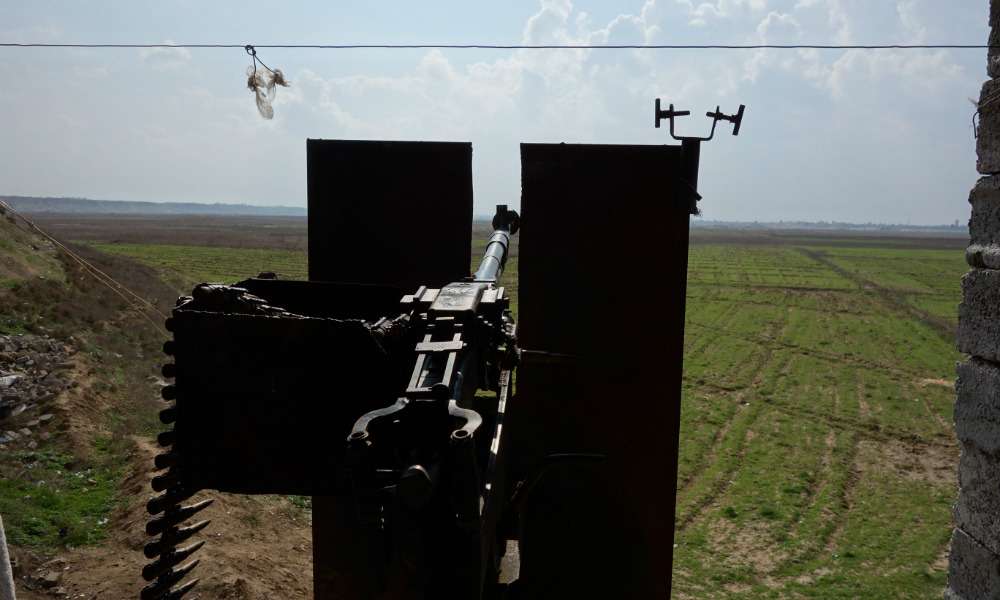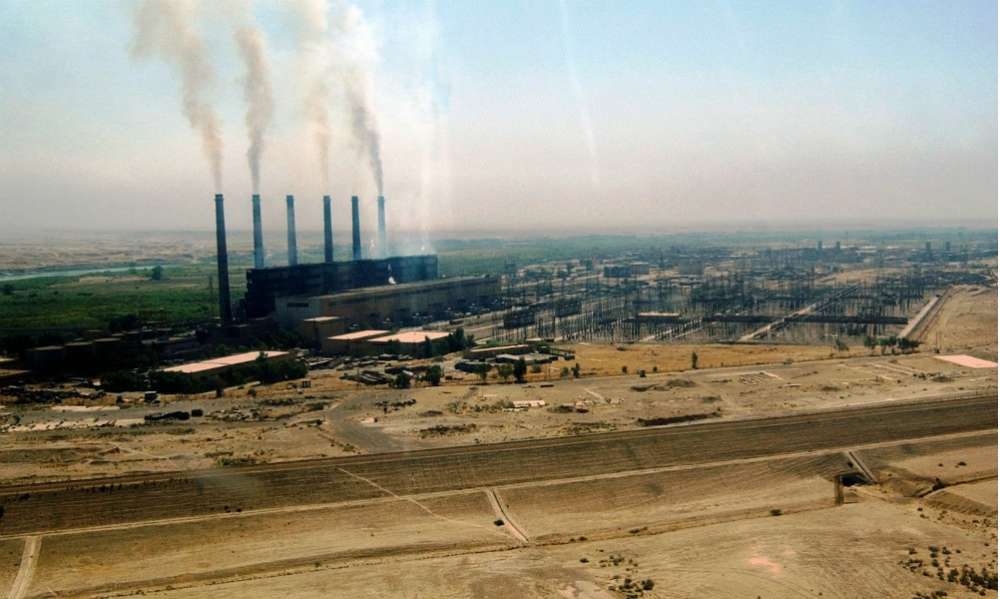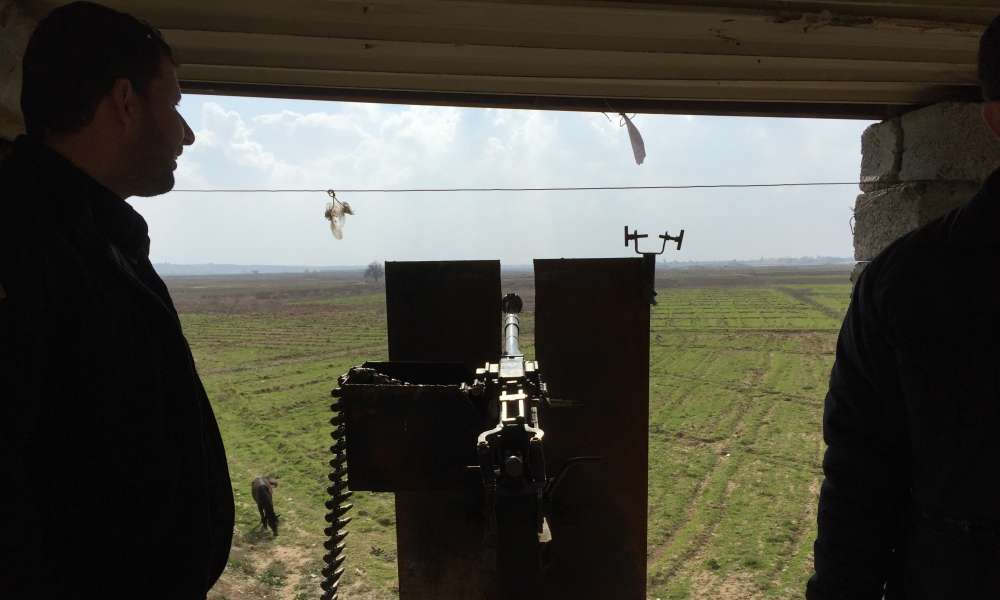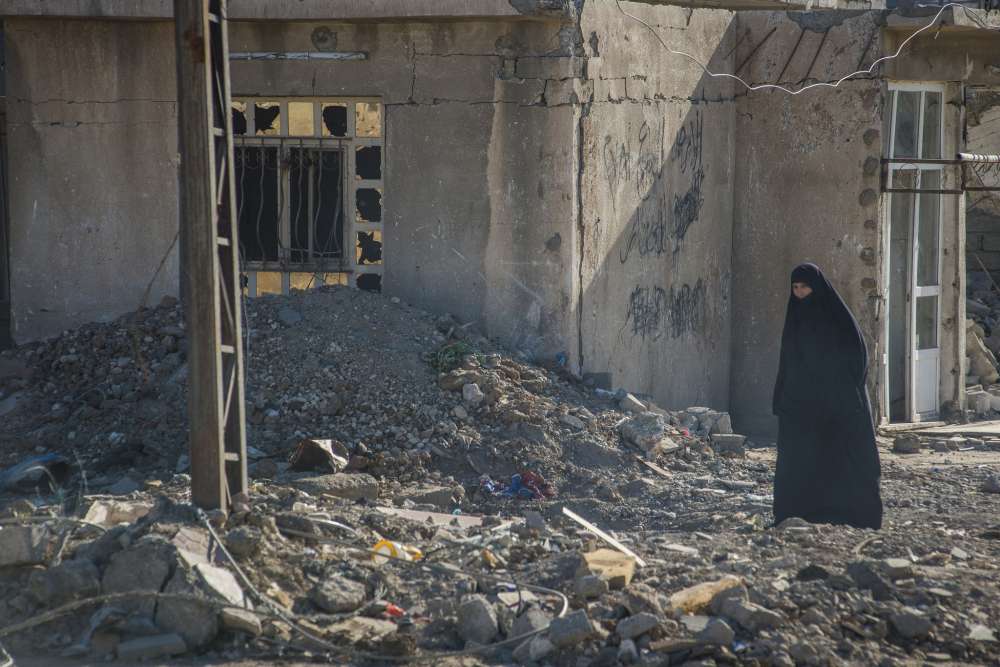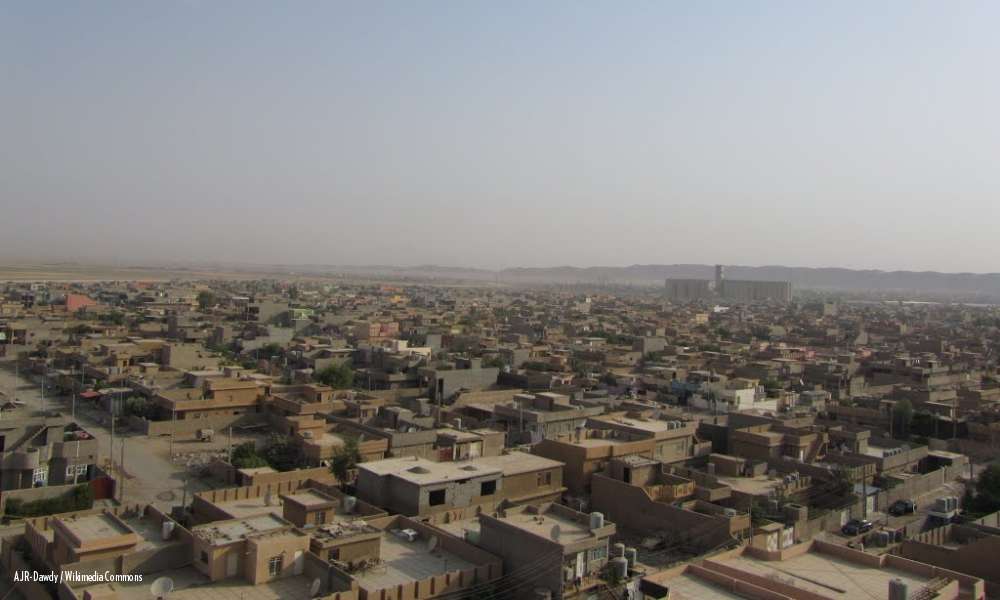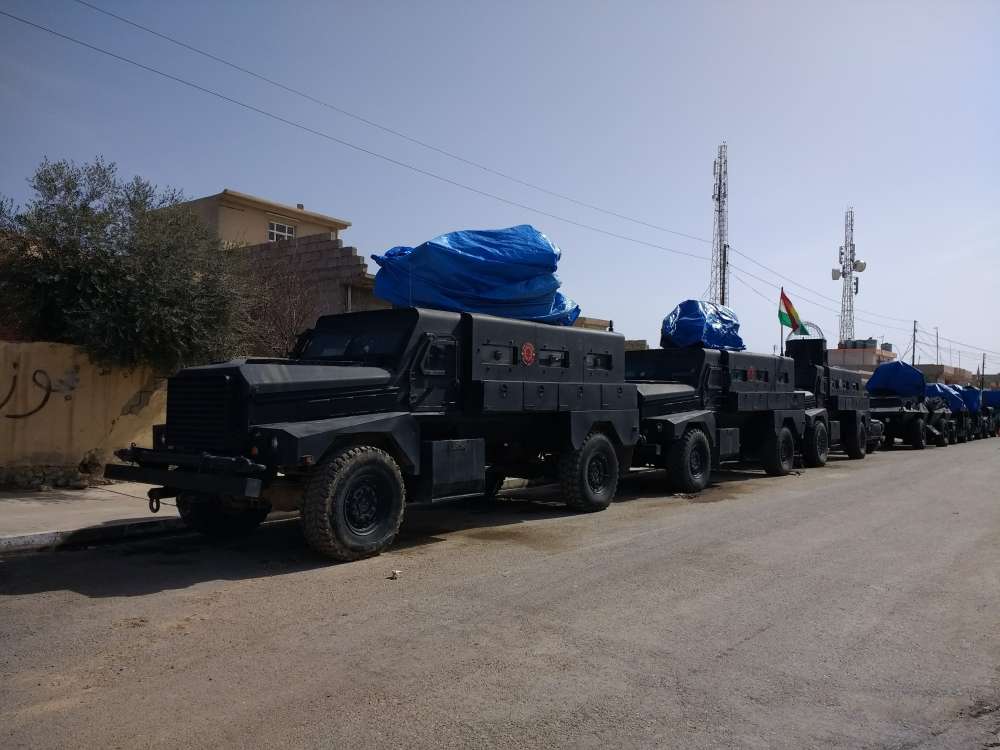Local Forces, Local Control
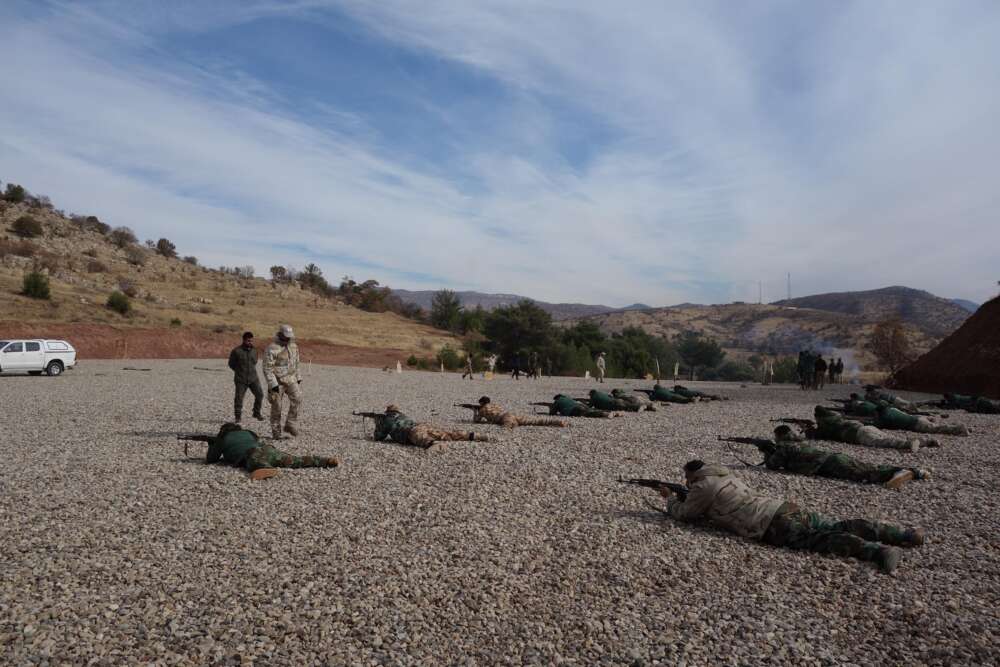
This report is part of a larger study on local, hybrid and sub-state security forces in Iraq (LHSFs). Please see the main page for more findings, and research summaries about other field research sites.
The threat posed by ISIL provoked mass mobilization across Iraq and the Kurdish Regional Government (KRG) regions. Much greater attention has focused on the larger forces that led operations on the ground, not only the regrouped Iraqi army but also the militias and popular forces converted into the Popular Mobilization Force (PMF) as well as the Peshmerga forces under the KRG. However, some smaller forces drawn from the communities occupied by ISIL also joined the fight. Although not as militarily or strategically significant, these smaller forces still played an important role in the optics of the fight against ISIL as well as in the micro-battles for control over recaptured territories by the larger political forces. Moreover, the relationships between these three larger groups and locally mobilized forces significantly shaped the patterns of control, levels of fragmentation, and overall dynamics in liberated areas. The control patterns and conditions that resulted continue to reverberate in Iraq’s local and national politics.
This article analyzes the relationship between these local forces and the three larger forces or political factions in the anti-ISIL coalition – the Iraqi Security Forces, the KRG, and the PMF (in particular the handful of prominent Shi’a PMF forces leading the PMF) – from 2014 through 2017. It draws from the research and findings of GPPi’s larger mapping of local, hybrid, and sub-state forces (LHSFs) in post-ISIL Iraq. More detailed accounts of the mobilization and recruitment patterns at a local level can be found in each of the 11 geographic case studies. The final report of this mapping is also available here.
Introduction: Mobilization of Local Forces and Competing Strategies of Control
As Iraqi forces, together with the newly-created PMF, regrouped to respond to the threat posed by ISIL, local communities in areas taken by ISIL began forging their own defensive forces. Local forces mobilized from Sunni Arab and Kurdish tribes, Shi’a and Sunni Turkmen communities, and Shabak, Yezidi, and Kaldo-Assyrian — or Christian minority — communities. Some mobilized as very small, village-level defense forces; others did so along larger tribal or communal patterns of allegiance, and still others rallied behind local political or community leaders. A brief summary of some of these local forces is included at the end of this article and is available in the larger “Who’s Who” of LHSFs in Iraq.
With only a couple of hundred to a few thousand members each, these local forces did not have the numbers or political strength to stand on their own, and instead tended to affiliate with one of the three larger forces in the anti-ISIL coalition: Iraqi Security Forces, the Peshmerga (either affiliated with the Patriotic Union of Kurdistan or Kurdish Democratic Party), or one of the larger Shi’a PMF forces leading the PMF. For their part, the larger forces often welcomed or proactively sought out local recruits. Locally mobilized forces acted as force multipliers for these larger security actors, helping them to hold areas by manning checkpoints, conducting security patrols, or simply putting a local face to what local communities otherwise viewed as outside forces. A quid pro quo emerged in which each of these three larger groups sought to benefit from their local affiliates’ local legitimacy and knowledge. For their part, local and minority actors depended on these larger forces for resources – from weapons and salaries to training and logistics assistance – and, importantly, for political support.
Within this landscape of increasing local mobilization, Iraqi forces, the larger Shi’a PMF forces, and Kurdish forces emerged as competing centers of gravity. At least some of them began to use this to their advantage.1 Cooperation with or cooptation of local forces became a prominent strategy of control in the 2014 to 2017 period, and played into the larger political competition between Baghdad, the PMF, and the KRG. While all of these forces (both the big three and the smaller, local forces) and their political constituencies were united in the campaign to expel ISIL, many also strategized for the aftermath and the potential political or military contests to come. Baghdad and the KRG have been locked in a long-standing dispute over Kurdish autonomy in general and the status of the Disputed Territories in particular. Baghdad-Shi’a PMF competition was more muted, but still ongoing. While the Shi’a PMF was aligned with and generally supportive of Baghdad, individual PMF forces had their own agenda and interests. In this 2014 to 2017 period, they appeared to compete with ISF and Iraqi authorities for local control and influence, a signal of rising ambitions for their own political influence in the country.
Control of strategic areas in the newly liberated zones would allow these actors to achieve important political goals or strengthen their leverage in future. For the KRG, control over parts of the Disputed Territories as well as the expansion of their zone of control and influence was the main goal; achieving it might also allow them to influence a future political referendum on the status of these areas. For the PMF, greater influence in strategic areas might (some argued) provide logistical access routes to Iran and Syria and, on a broader level, might provide influence in future electoral cycles. Local forces and political leaders were equally motivated by considerations of what would come next: many knew that control of an area in this transition period could determine who would stay and who would go, and who would have decisive political control in the future.
While the underlying strategic motivations may have been similar, the KRG, the PMF, and Baghdad deployed different strategies on the ground for gaining control or influence. Of the three, the larger Shi’a PMF forces were the most proactive in developing strong local affiliates, while Iraqi forces were least assertive in their local control and cooption strategies. This section will detail some of these local control and mobilization patterns, followed by a discussion of their impact on local dynamics.
Shi’a PMF: Seeking Strong Local Auxiliaries and Partners
Shi’a PMF forces appeared much more interested in developing strong, local auxiliary forces in ISIL-recaptured areas than Kurdish forces or the ISF. Of course, the PMF are not monolithic; different groups within the PMF employed different strategies for seeking local allies or their own level of autonomy in local control. The most notable trend was that some of the larger Shi’a PMF forces – in particular Badr, Asa’ib Ahl al-Haqq (AAH), and the Hezbollah Brigades – appeared to take a franchise approach to local force mobilization, which seemed connected to a larger strategy of extending their influence in both the short- and long-term.
This trend was particularly strong in areas where there were local Shi’a communities. Local Shi’a PMF forces tended to be the best equipped, best trained, and most autonomous local forces. Shi’a Turkmen brigades like Brigades 16 and 52, which operated from Tuz district in Salah ad-Din to Taza Khurmatu in Kirkuk, acted virtually autonomously and held the territory on their own, thereby excluding other local rivals. Shi’a PMF-backed Shabak forces around Mosul and in the Ninewa Plains also were more dominant compared to other local forces in their area. They used their position to dominate checkpoints and strategic areas, thus crowding out other local forces and actors or preventing them from returning. Having strong and loyal local affiliates was an advantage in such areas because the larger Shi’a PMF groups had a limited or no formal remit in these areas. For example, Shi’a PMF forces had agreed to withdraw from Tuz district after the initial recapture of the area, and had never been assigned a formal clearing or holding role in Mosul. Maintaining local allies in these areas was a way for national PMF forces to keep a level of engagement and influence in these areas while still formally complying with restrictions imposed on their presence.
Although these larger Shi’a PMF forces tended to have stronger relationships with local Shi’a communities and forces, they were mostly agnostic in their choice of local actors with whom to work. The Shi’a PMF were also involved with PMF forces from other communities. They helped mobilize and support a number of Sunni Arab PMF forces in Salah ad-Din. Moreover, a small Christian PMF contingent was in charge of majority Christian towns in the Ninewa Plains. There were also reports of Shi’a PMF forces seeking to recruit Sunni Arab forces in Ninewa, for example in and around Mosul. These non-Shi’a local PMF forces tended to be much smaller and militarily weaker than those such as the Shi’a Turkmen or Shabak force, although there were also exceptions. The Sunni Arab PMF known as “Brigade 51” in Shirqat was relatively strong and able to act autonomously. It appeared to have a closer relationship with Shi’a PMF forces than other Sunni tribal forces in Salah ad-Din, resulting in a ‘strange bedfellows’ relationship: although they came from opposite ends of the political and sectarian spectrum, the partnership advanced both actors’ local agendas.
All of these local forces were formally part of the PMF, which legally reports to Iraqi authorities, with a reporting line through the Prime Minister. However, local forces de facto reported to and were largely loyal to the individual Shi’a PMF forces that mobilized them. This is largely due to the recruitment, administration, and supply structures themselves. Recruitment into the PMF has typically followed one of two routes. One common pattern was for Shi’a PMF forces to initiate mobilization: as a Shi’a PMF force entered a newly recaptured area (either as part of the liberating force or immediately following it), it would recruit local commanders and forces, thus creating an auxiliary force to help hold the territory. The Shi’a PMF force that mobilized these recruits would also manage them on behalf of the larger PMF structure, administering any PMF salaries or resources, and often providing additional resources or training to their local affiliates. As a result, the local auxiliary force would be attached to and affiliated with the individual Shi’a PMF force that had mobilized it originally. In places like Tuz Khurmatu, this trend was so pronounced that it was still possible to tell which Shi’a PMF force had liberated each individual sub-district or village cluster (of about half a dozen engaged in the initial campaign) two years after ISIL’s ouster, because the local, largely Shi’a Turkmen PMF forces holding the area were still flying their flag.
The second typical pattern of recruitment was initiated by the local forces themselves, but resulted in this same level of administrative and resource control by the leading Shi’a PMF forces. Created only in mid-2014, the PMF lacked an extended organizational structure that could handle processes like recruitment and force administration for the organization as a whole. Instead, from the beginning, it was the larger Shi’a PMF forces that took on these functions. Local forces wishing to form a group and be registered and paid through the PMF structure would make their application through one of these larger Shi’a PMF groups, often via personal contacts. Once accepted, the larger Shi’a PMF group they applied through would continue to administer and provide resources to those local forces.
This administrative role provided a lever of influence, if not outright control, over the local groups. In Shirqat, Brigade 51 had a greater deal of autonomy than some local forces because it was led by a well-connected local political leader; it also had a stronger fighting capacity. During the prolonged liberation campaign in Shirqat, Brigade 51 worked more closely with the ISF forces in Shirqat city rather than reporting to the Shi’a PMF on a regular basis. Nonetheless, even though it was somewhat more autonomous, Brigade 51 still reported to the Shi’a PMF in the area in an administrative sense. Moreover, the Shi’a PMF sometimes used this relationship of support to prevail upon the Brigade to conduct house searches in Shirqat on their behalf and to report back to them on what was found. These levers of control were present even where the local groups did not identify with the Shi’a PMF’s forces or want to be controlled by them. Given longstanding Shi’a‑Sunni tensions, there tended to be significant animosity between local Sunni tribal forces and their larger Shi’a PMF affiliates. In some instances, the behavior of Shi’a PMF forces in Sunni areas caused tensions between the groups. For example, one former leader of an AAH-affiliated Sunni tribal force in Al-Alam said he disliked AAH fighters’ behavior and presence in the local area, but that if he wanted support for his fighters, he had to affiliate with AAH and work with them.
KRG Forces: Self-Reliant, but Identifying Local Partners in Host Communities
KRG forces, both affiliated with the Kurdistan Democratic Party (KDP) and the Patriotic Union of Kurdistan (PUK), appeared to be more interested in expanding their own Peshmerga control than supporting local actors to act on their behest. However, they would bring local actors under the Peshmerga umbrella, or establish links or cooperation with local actors where it strengthened their interests to do so. For example, in attempting to extend influence in Kirkuk, PUK Peshmerga increased their influence with local police in the governorate. PUK Peshmerga in Kirkuk supported a mixed Kurdish-Turkmen tribal force in Yaychi, Kakai fighters in Daquq, and a group of mixed Sunni Arab, Kurdish, and Turkmen fighters near Bashir. KDP Peshmerga in Zummar converted local Sunni Arab tribal forces (some formerly part of the TMF program) into an Arab Peshmerga brigade called the Jazeera Brigade and supported local Kurdish tribal forces. They also partially funded multiple different Christian forces in the Ninewa Plains (NPGF, NPF, Dwekh Nawsha); the NPGF was eventually integrated into the Peshmerga.
These local forces – whether Kurdish, Sunni Arab, Christian, or other – tended to be given enough support to keep them onside, but not so much that they could become strong, independent fighting forces. Their main value was political rather than tactical. For example, Kurdish officials interviewed for this research noted that the value of mobilizing the Jazeera Brigade was that it provided a local face and local intelligence. Moreover, this kept the fighters in the force from being recruited by other actors. Kurdish support for the Jazeera Brigade in Rabi’a and Zummar as well as the mixed Sunni force near Bashir in Kirkuk both appeared motivated partially by a desire to balance or check the rising strength of other LHSFs in the area that opposed Kurdish interests (respectively, against anti-KDP groups in Sinjar and PMF groups in Bashir). The value of developing relationships with local forces and buying their cooperation on the ground was similar to efforts to coopt local civilian actors; it was a way to increase leverage and control, not to encourage local autonomy.
Iraqi Forces: Disengaged from LHSF Mobilization
Compared to Kurdish and Shi’a PMF forces, Iraqi forces took a relatively hands-off approach toward recruiting local support. The ISF were fully occupied pushing the frontline against ISIL forward, and had less time to invest in developing local “hold” forces. Where Iraqi forces and officials did encourage recruitment, their efforts mostly focused on rebuilding the local police and discouraging the formation of further sub-state forces.
The overall attitude of Baghdad toward local forces appeared to be to resist mobilization altogether or keep them weak and marginalized where they nonetheless emerged. Even the Sunni Arab Tribal Mobilization Force (TMF) program, which included the local PMF fighters that were most directly overseen by Federal Police, was driven more by the US and by the tribal actors themselves than by Iraqi authorities. The Iraqi government likely would not have mobilized these forces on its own, and Kurdish and Iraqi authorities tried to slow the program’s development on a regular basis. Both Kurdish and Iraqi approval was required for each newly authorized unit in Ninewa. US officials involved with the program said that there was frequently “foot-dragging” in approving new units and growing the program. Restrictions on the number of forces per unit (100 to 200 on average) as well as minimal training and equipment kept the TMF weak, with limited remit and capacity to influence local or national dynamics.
When it comes to other LHSFs under Iraqi control, it should be noted that every group within the PMF was nominally controlled by the Iraqi forces, and some PMF groups, such as the Ali al-Akbar Brigade, worked closely with and indeed as subordinates to them. In addition, on a case-by-case basis, some local PMF groups ended up fighting more alongside Iraqi forces than other PMF structures. Examples include one former TMF unit fighting in Shirqat as well as the Christian unit NPU holding Qaraqosh. Former Ninewa Governor Ateel al-Nujaifi’s Ninewa Guards were largely independent, but to the extent they cooperated with one of the three larger forces, it was the ISF rather than the PMF (even though they were technically registered under PMF auspices).2 Where closer relationships between local forces and Iraqi forces existed, they tended to emerge on the ground, based on local commander contacts, rather than coming out of a strategy of local mobilization and cooption on the part of the Iraqi government.
Local Agency and Swapping Sides
Although these were the broad trends in mobilization and control of local forces, there were also exceptions and fluid relationships across these categories, as might be expected in such a complex and fast-changing environment. In addition, local forces had some degree of agency, and the availability of different backers allowed leaders of local forces to shop for one who might advance their personal interests or their community’s political position. For example, leaders of different Christian or Kaldo-Assyrian forces interviewed for this research appeared to align their forces with whatever side (Baghdad or the KRG) they thought most likely to protect them and grant them some degree of autonomy.
Leaders could also exploit changing control patterns to change their allegiance to groups that might align more with their interests or simply provide more money and equipment. The Sunni Arab tribal fighters from al-Alam mentioned above were established by Shi’a PMF forces (AAH but also Badr); however, as Iraqi authorities and police assumed greater authority in the area, these Sunni tribal PMF forces were able to switch to working more closely with Iraqi forces and local police whom they viewed as better representatives of local Sunni interests. The leader of one Sunni tribal force in Rabi’a, the Ninewa Lions, was dissatisfied that only a third of his fighters could be placed on payroll under the TMF program, that salaries were irregular, and that equipment and weaponry were light. For these reasons, he pulled the Ninewa Lions from the TMF program and joined the Peshmerga-sponsored Jazeera Brigade. There were also reports of TMF groups switching programs and allying themselves with Shi’a PMF forces in exchange for more money as well as more advanced weapons and equipment than those that would be offered to them by the US-backed program. Local Sunni groups were engaged in an “arms race,” said one US official at the US diplomatic mission to Iraq in Erbil, with each group seeking more advanced weaponry, more fighters, and more funding than their rivals (or potential future rivals). He argued that as this arms race ratcheted up, the US would inevitably fail to keep up with the much better equipped and less restricted Iranian-backed PMF forces. As the US official reflected, “This is why the US has trouble competing with the Iranians – they give more stuff, pay better, and do it quicker.”
Another Sunni Arab unit that was stood up under the TMF program in Ninewa was blocked from the program after evidence emerged that they had committed grave violations of human rights (predominantly torture of captured suspected ISIL fighters). As a result, they switched to fighting alongside ISF in and around Shirqat district in order to keep fighting (and to do so with fewer limitations).
Effects of Differing Strategies of Local Control
These differing control strategies were important because local control provided the opportunity to change or shape local dynamics. Those in control used their position to disadvantage or attack rival groups or actors, often through violence, property destruction, and rights violations. The Shi’a Turkmen forces in Kirkuk and Tuz engaged in some of the worst abuses, committing repeated and severe abuses against those not belonging to the Shi’a Turkmen community. They destroyed and burned homes on a community level, and forcibly displaced or blocked the return of those not belonging to the Shi’a Turkmen communities in these areas. It was estimated that more than 70,000 people had been displaced and prevented from returning to Shi’a Turkmen areas by August 2017, when GPPi research concluded. Similar types of violence, if not as widespread or severe, followed the mobilization of Shabak armed groups in the Ninewa Plains. While often motivated by retaliation in the immediate term, such violence also increased the prospects of future control because it deterred or prevented other groups from returning. For example, no non-Shi’a Turkmen communities had returned to Amerli in Tuz under PMF control. In the Ninewa Plains, Shabak communities were largely taking over formerly Christian/Kaldo-Assyrian urban areas, as those communities stayed away.
Shi’a PMF affiliates were not the only ones trying to use their position of control to reshape local dynamics. In areas of the Disputed Territories that came under Kurdish control after 2014 and before Kurdish forces were pushed back in October 2017 (areas like Kirkuk, Tuz, Zummar, and Rabi’a in this study), non-Kurdish, predominantly Sunni Arab, villages and communities were razed, Sunni Arab communities and IDPs were forcibly displaced, and their return was blocked. Although Kurdish forces justified the widespread property destruction and rights violations as necessary to address security threats and ISIL sleeper cells among Sunni populations, the result was demographic changes that tipped these already contested areas closer to being predominantly Kurdish; it also reversed some of the forced population changes that took place under Saddam Hussein’s Arabization policies. With most of these actions taking place in the run up to the September 2017 referendum on Kurdish independence organized by the KRG, such forced demographic changes carried a whiff of ethnic gerrymandering.
Although these scorched-earth tactics were most apparent in the Disputed Territories, property destruction and forced displacement with an intent to disadvantage rival groups also took place in other areas firmly held by Baghdad. The larger political, ethnic, or sectarian conflicts intermixed with purely local political fights or quests for revenge, and it was sometimes difficult to distinguish whether the local forces in question or their larger political backers were primarily responsible for the violence. While the forced property destruction in and blocked return to the Disputed Territories controlled by Peshmerga forces seemed driven by KRG efforts to “Kurd-ify” these areas, a lot of the retaliatory violence and abuses in Shi’a Turkmen-controlled areas seemed as much or even more acutely driven by local Shi’a Turkmen PMF forces and their desire to exclude local rivals.
In many cases, violence served the ends of both the local affiliated force and their larger backer. For example, PMF-affiliated Sunni tribal forces in Salah ad-Din, in areas like Tikrit and Shirqat, were accused of having engaged in significant acts of violence against rival tribes, including blocking return, mass looting, and property destruction, as happened following the liberation of Tikrit. Taking the example of the looting of Tikrit, one local analyst said that such violence was mutually beneficial: Sunni tribal forces involved used it as an opportunity to exact revenge on local tribal rivals who had supported ISIL and attacked their families only months before. By supporting the Sunni tribal forces in doing this, Shi’a PMF forces also got their revenge for the Camp Speicher massacre without violating the official ban on their presence in the city (following US demands that the Shi’a PMF withdraw). However, separate and distinct from violence enacted by affiliated Sunni tribal forces, Shi’a PMF groups in these areas were also responsible for significant destruction and blocked return, as documented in areas around Tikrit as well as in Baiji, among other areas.
Implications for Future Political Control and Competition
The result of these differing strategies toward local cooption and control was that by the fall of 2017, individual Shi’a PMF groups and Kurdish forces had more local partners and forces on the ground as well as greater ability to influence local dynamics in many areas than Baghdad. These micro-political contests for control were important because they gave whoever was in control the potential to affect future political dynamics, for better or worse. Those levers of influence persist.
One of the clearest examples of efforts to use the 2014 to 2017 period of control to advance future agendas was the Kurdish efforts to assume control of more areas in the Disputed Territories. Attempts to use this period of control to further “Kurd-ify” these areas and restrict the Arab population from returning seemed aimed at tipping a referendum on Kurdish autonomy toward the Kurds. In retrospect, this strategy, or at least the timing of the referendum, backfired: the September referendum results prompted Baghdad to re-assert control and reversed the estimated 40 percent of Kurdish territorial gains since 2014.
However, while the KRG may have overplayed its hand, the effects of this competition for control can still be seen in the areas that flipped. The forced displacement and blocked return of Arab communities exerted a significant toll on the families it affected, and the destruction of Arab villages and neighborhoods cannot be undone. Competing Kurdish and PMF strategies to mobilize communities in these areas in their favor also contributed to greater local fragmentation, increased the number of armed groups, and led to higher levels of tit-for-tat violence, thus sewing the seed of potential conflict and violence in the future. For example, research in Kirkuk found that the presence of competing Kurdish, Shi’a Turkmen, and other forces increased overall criminality and instability in Kirkuk and deepened existing fractures in local security politics. A local monitoring organization interviewed for this study said that they had recorded a steady increase in Kirkuk-based security incidents since 2016. As part of research conducted by GPPi in Kirkuk for this project, 40 key informants from a range of Kirkuk’s different ethnic, sectarian, and political constituencies were interviewed. Most of those interviewed feared that the failure to keep in check the many different armed groups, all mobilized along competing lines of allegiance, would lead to future, worse rounds of conflict. So far, the areas that were subject to the most heated competition for local forces and local control in the 2014 to 2017 period continue to be roiled by higher levels of tit-for-tat violence and instability.
The other side of this coin – PMF efforts to increase their influence and control – have equally serious bearings on future dynamics. Like Kurdish efforts to extend control in order to sway a future referendum, locals in many areas saw expanded PMF influence as an attempt to sway future election results. In Salah ad-Din, for example, locals feared that the expanded PMF presence and their alliance with local PMF forces under Yassin al‑J’bouri (the Shirqat Brigade 51 mentioned earlier) could tip the elections toward this local faction, and against the sitting governor. As one tribal elder commented, “The next elections will be under their control, and they will choose whomever they wish. The winners will be one of their allies.”
Outside PMF political aspirations, the fact that in many areas PMF forces hold the greater tactical advantage on the ground – via their local auxiliaries – gives them significant clout to use either at the service of Baghdad or not, depending on what suits their interests. When Iraqi forces moved to check Kurdish expansion following the September referendum, they relied on their PMF allies to do so. Focused on the campaign against ISIL elsewhere, Iraqi forces had not had a presence in Kirkuk since they were expelled by ISIL in 2014, and had only limited links with other parts of the Disputed Territories, such as Tuz. Shi’a PMF forces and the local proxies they had invested in held the levers of influence in these areas, which significantly smoothed the pathway for the ISF’s return.
While this played to Baghdad’s advantage in the standoff over the referendum, it may not be so helpful in the future. As Renad Mansour has argued in another blog post for this project, Shi’a PMF forces are demonstrating greater determination to act autonomously under their own political auspices, and increasingly contest or compete with Iraqi forces, whether at checkpoints or at the ballot box. The fact that the PMF hold the cards in many of these strategic areas and access routes may become a problem if or when PMF and Baghdad’s interests diverge.
After three years of the mobilization of competing factions, mass human rights abuses, and violations by one side against another, the areas that Baghdad brought back into the fold in October 2017 were primed for ethnic and sectarian violence. Overall, the local landscape is more fragmented and divisive, harder to control, and more prone to instability. The challenge is even greater for Baghdad because many of the levers to influence the situation lie in the hands of other national or regional actors, who have invested more in developing local partnerships and leverage since 2014. While top-down strategies of political reconciliation are important – among them, coming to a stable set of terms with the KRG or asserting clear lines of authority and setting out clear roles for the PMF – the Iraqi government also needs to invest in rebuilding its legitimacy and control from the bottom up. Getting these local micro-political contests and their accompanying forces under control is a key part of finding a stable balance between different stakeholders within the Iraqi state. As one politician affiliated with Christian forces in Qaraqosh argued, the worst-case scenario for local communities would be that the current stalemate, in which different stakeholders’ sides compete with each other via local actors, continues. “If there will be a decision on these, then I’m optimistic, but if they just let it go as it is, then it will get worse.”
Annex: List of Key Local Force Contingents
Although there is tremendous diversity in the nature of and role played by local forces, it is helpful to break out some of the patterns for each community. More detailed descriptions of these different forces is available in a separate article within this project, “Who’s Who,” as well as in the geographic case studies, which tend to detail splits or divisions within these communities. A brief description of the different types of forces that emerged:
- Sunni tribal forces under the Tribal Mobilization Program – The US sponsored a program to recruit tribal forces in Ninewa and Anbar, known as the “Tribal Mobilization Program” (TMF). TMF units of 100 to 200 forces each received salaries through the Iraqi government. Moreover, they were eligible for light weapons and equipment provided by the US as well as training from international Coalition members. The program had authorized support to a total of 35,000 forces by the summer of 2017, although not all were active.
- Other Sunni tribal forces – Other Sunni forces also mobilized outside of the TMF program. This was more prominent in Salah ad-Din, where the TMF was not authorized. Sunni tribal forces were recruited into the PMF umbrella through larger Shi’a PMF forces, who then administered their pay and provided varying degrees of command and control. Other Sunni forces (some of which had been in the TMF but decamped) fought alongside Peshmerga forces in north Ninewa or Iraqi forces in Ninewa and Salah ad-Din. Notable among these was former Ninewa Governor Atheel Nujaifi’s 3000-strong Ninewa Guards force, which received training and support from Turkey.
- Shi’a Turkmen forces – Some of the large Shi’a PMF forces (Badr Brigade, Hezbollah Brigades, Peace Brigades, Asa’ib Ahl al-Haqq (AAH), etc.) recruited local affiliate forces from among the Shi’a Turkmen population in Tuz, Salah ad-Din, and parts of Kirkuk governorate. These were among the strongest local forces, able to hold territory on their own and execute operations. In areas where they have operated, they have engaged in widespread kidnappings, arbitrary detention, torture, looting, and the mass destruction of houses, which resulted in few returns of non-Shi’a Turkmen to areas under their control (see, for example, their actions in Tuz and in Kirkuk).
- Shabak Forces – Shabak forces played a role in Ninewa that was similar to that of the Shi’a Turkmen in Kirkuk and eastern Salah ad-Din. They were recruited as auxiliary forces by larger Shi’a PMF units. Shabak forces in the areas around Mosul were actively involved in both frontline fighting and holding areas, and gained a reputation for harsh treatment and retaliation against Sunni Arabs.
- Kaldo-Assyrian or Christian forces – There are at least four Kaldo-Assyrian or Christian forces operating in the Ninewa Plains areas, aligned with different Christian political parties. These are: the Ninewa Plains Protection Unit (NPU), the Ninewa Plains Guard Forces (NPGF), the Ninewa Plain Forces (NPF), and Dwekh Nawsha. The number of forces in each of these groups ranged from 3000 to no more than 50 fighters. All had a reputation for being relatively weak military and each depended on affiliation with either Baghdad or KRG forces, both for training and salaries and political and force protection.
- Kurdish forces – In addition to the much larger block of Kurdish forces that was part of the Peshmerga, local Kurdish tribal forces in areas like northern Ninewa and in Kirkuk also joined Kurdish forces as local auxiliaries, at least during the period of Kurdish control of these areas. The number tended to be small and they did not conduct significant independent operations.
- Yezidi forces – The geographic case studies did not include predominantly Yezidi areas and other studies provide more information on the breakdown of Yezidi forces. Different Yezidi forces affiliated in various ways with PMF, the PKK, and the two KDP parties; they frequently changed sides to gain political advantages or resources.
Notes
1 The PKK also acted as a competing center of gravity, attracting and supporting local forces in places like Sinjar. However, these forces were not as prominent in the areas examined for this research and are not the focus here.
2 They were decidedly not cooperating with the Shi’a PMF despite the formal PMF status of the Ninewa Guards.
